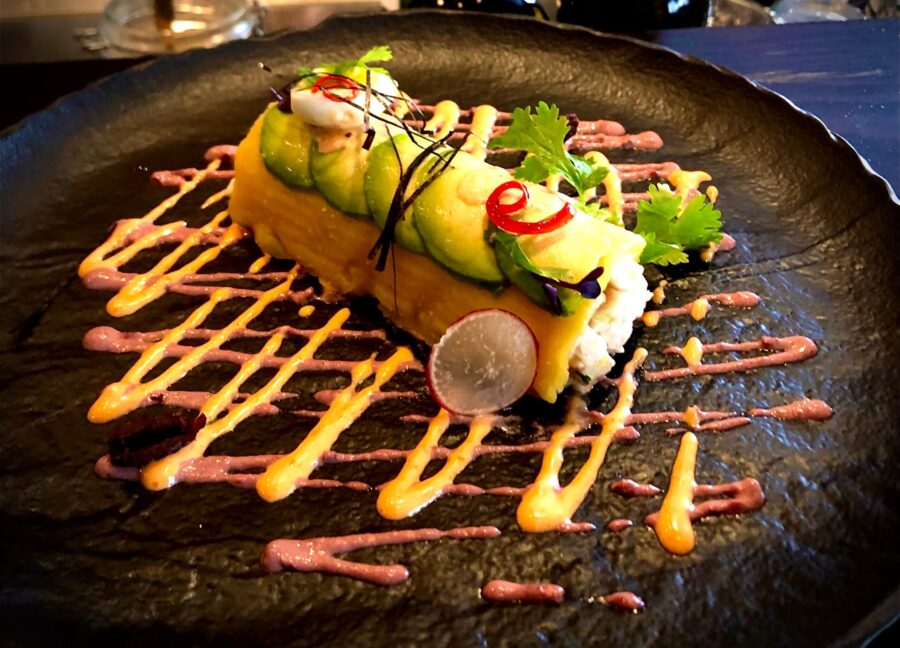In recent decades, Peruvian gastronomy has evolved into a global phenomenon, celebrated by gourmands and cultural experts alike. Esteemed institutions such as National Geographic and The World’s 50 Best Restaurants regularly recognize Peru as one of the world’s leading culinary destinations. This acclaim is the result of a unique confluence: unparalleled biodiversity, a rich mosaic of cultural influences, and a dynamic culinary scene that honors tradition while embracing innovation. Lima’s Central restaurant, for instance, has achieved ‘Hall of Fame’ status for its outstanding achievements, underscoring the country’s premier position in global cuisine.
The foundations of this excellence rest upon two pillars. Peru’s varied geography, stretching from the Pacific coast across the majestic Andes to the lush Amazon rainforest, offers an astonishing abundance of ingredients. This natural treasure is a cornerstone of its cuisine, aptly described as a land of “so many climates, so many possibilities.” Concurrently, the historical intermingling of indigenous cultures with waves of immigrants Spanish, African, Chinese, Japanese, and Italian has forged a melting-pot cuisine, with each group leaving indelible marks through ingredients, techniques, and culinary philosophies.
This article embarks on a journey into Peru’s culinary heart, exploring how its food scene evolved to become a vibrant, eloquent expression of its complex history, rich cultural identity, and deep connection to the land. We will illuminate iconic dishes, regional variations, and the profound cultural significance of food in Peruvian life. The global recognition of Peruvian cuisine stems not just from “good food” but also from a “good story” , a narrative of cultural amalgamation, unity, and the intersection of tradition and modernity. The strength of Peruvian cuisine lies in its capacity not only to absorb diverse influences but to transform them into something uniquely Peruvian, a dynamic process of cultural and culinary adaptation and innovation.

The Bedrock of Flavor: Pillars of Peruvian Gastronomy
The soul of Peruvian cuisine is revealed in its fundamental ingredients, a blend of Andean heritage and the bounty of the Pacific and Amazon. These elements are not merely foodstuffs but carriers of history and culture. Central to the Peruvian pantry are ingredients cultivated and cherished for millennia. The potato, born in Peru, shines with an astonishing variety of over 3,000 types and stands as a symbol of national identity and culinary heritage. Its versatility is showcased in iconic dishes like the creamy Papa a la Huancaína, boiled potatoes with a spicy cheese-ají sauce, and the layered Causa Rellena, a cold mashed potato tart whose name “Causa,” meaning “for the cause,” harks back to a patriotic past. A special form, Chuños black, freeze-dried potatoes results from ancient indigenous preservation techniques.
Corn, or Maíz/Choclo, is another cornerstone, with over 50 varieties ranging from the large-kerneled Choclo, often served with cheese or as an accompaniment to Ceviche, to purple corn, Maíz Morado, the base for the refreshing Chicha Morada beverage and desserts. Corn is also used for ceremonial drinks like the fermented Chicha de Jora. Quinoa, this ancient Andean grain revered by the Incas, is experiencing a global renaissance as a “superfood,” symbolizing a return to rich indigenous culinary heritage, championed by chefs like Gastón Acurio. Ají peppers are essential to Peruvian flavor profiles, particularly Ají Amarillo, a fruity yellow chili that imparts characteristic color and complex aroma, considered a “unifying national spice.” Smoky Ají Panca and fiery Rocoto, often stuffed for Rocoto Relleno, also play vital roles, fundamental to the complex flavors of many sauces and marinades.
Furthermore, the Pacific provides fresh fish and seafood. Aromatic herbs like Huacatay, Peruvian black mint, and cilantro, or the more intense culantro, lend distinctive notes. A wealth of fruits from the Andes and the Amazon, including lucuma, camu camu, aguaje, and cherimoya, enrich desserts and drinks. Yuca (cassava) and camote (sweet potato) are also key staples.
Daily life in Peru follows a specific rhythm of meals. Breakfast, Desayuno, served between 7 and 10 AM, can be hearty in mountain regions, featuring options like Pan con Chicharrón (bread with crispy pork), chicken soup, or Sangrecita (seasoned chicken blood). In Lima, pastries and fresh fruit juices like papaya are common. Lunch, Almuerzo, between 1 PM and 3 PM, is the main meal for most Peruvians, often multi-course, especially the inexpensive “menú económico,” consisting of soup, a main dish, dessert, and a drink. Businesses may close for this important meal. Lonche, an afternoon snack around 5:30 PM, is a light meal of sandwiches, empanadas, or chifles (banana chips). Dinner, Cena, after 8 PM, is generally lighter than lunch.
The concept of “Criolla” cuisine refers to dishes deeply rooted in local tradition, often generously spiced, such as Sopa a la Criolla, a hearty soup. This reflects the Creole culture born from the fusion of indigenous, European, and African influences. Table manners emphasize politeness; “Buen provecho” (enjoy your meal) is customary, and sharing dishes is common. When toasting with Pisco Sour, “Salud!” (Health!) is the norm. Hospitality is significant, with guests often treated generously, reflecting “Munay,” a Quechua concept of universal love and care. Tipping is appreciated but not always obligatory.

A Culinary Map of Peru, A Journey Through Regional Kitchens
Peru’s gastronomy is as diverse as its landscapes, with distinct specialties found in its coastal, Andean, and Amazonian regions.
The coastal region, Costa, blessed by the nutrient-rich Humboldt Current, is the epicenter of sophisticated seafood cuisine. Here, Ceviche reigns supreme Peru’s national dish, where raw fish is “cooked” in lime juice, typically seasoned with Ají Amarillo, red onions, and cilantro, and served with sweet potato (camote) and Choclo or Cancha (toasted corn). Its freshness is paramount, and in 2023, it was recognized by UNESCO as Intangible Cultural Heritage. The tangy marinade, “Leche de Tigre,” is often consumed as an appetizer or a hangover cure. Tiradito, a close relative of Ceviche, shows Japanese (Nikkei) influence: thinly sliced raw fish, akin to sashimi, is dressed with a spicy sauce without onions. Another coastal jewel is Chupe de Camarones, a rich, creamy shrimp chowder, originally from Arequipa, made with potatoes, milk, eggs, and ají. Parihuela is a hearty seafood soup, while Chicharrón de Pescado/Mariscos, also known as Jalea, refers to fried fish or mixed seafood, often served with yuca and Salsa Criolla. Specialties of the North Coast include Seco de Cabrito, a goat stew, and Shambar, a substantial wheat and bean soup from Trujillo. Afro-Peruvian influences are evident in dishes like Carapulcra Chinchana, a stew of pork and dried potatoes, which in Ica is combined with Sopa Seca, seasoned noodles, to form “Manchapecho.”
Andean cuisine, Sierra, is shaped by altitude, robust crops, and ancient Inca traditions. An outstanding example is Pachamanca, a culinary ritual where various meats such as lamb, pork, chicken, and cuy (guinea pig), along with potatoes, sweet potatoes, corn, and broad beans, are marinated in herbs like huacatay and cooked underground with heated stones an offering to Pachamama, Mother Earth. Cuy itself has been an important protein source for millennia, often roasted or fried whole as Cuy Chactado. Hearty staples like alpaca and llama meat are traditional, and dishes featuring diverse local potatoes and corn are ubiquitous, including Papa a la Huancaína and Humitas, steamed fresh corn cakes. Olluquito con Charqui, a dish of olluco tubers with dried llama meat, is another classic. Cocina Novoandina, a culinary movement led by chefs such as Gastón Acurio, revitalizes ancient Andean ingredients and techniques with modern culinary arts, popularizing ingredients like quinoa globally. Arequipa is known for its Picanterías, traditional restaurants, and dishes like Rocoto Relleno. A unique custom there involves serving specific soups on particular weekdays, for example, Chaque on Mondays.
Amazonian cuisine, Selva, offers an exotic palette of ingredients from Peru’s rainforest. Here, one finds river fish like Paiche, one of the world’s largest freshwater fish, as well as Gamitana and Doncella. Tropical fruits such as camu camu, aguaje, cocona, and cupuaçu, yuca and plantains as staples, and even edible larvae like Suri, the larvae of the palm weevil, characterize the cuisine. Among the best-known dishes is Juane: rice, chicken, a hard-boiled egg, and olives, wrapped in bijao leaves and steamed or boiled, especially popular during the San Juan Festival. Tacacho con Cecina consists of roasted or fried green plantains mashed with pork fat and cracklins, formed into balls (Tacacho), and served with cecina (smoked dried pork) and regional chorizo. Patarashca is fish seasoned with Amazonian herbs, wrapped in bijao leaves, and grilled or cooked over embers. Many Amazonian cooking techniques involve using natural elements like leaves for wrapping, reflecting a deep connection with the rainforest environment.
Beyond the Plate, Peru’s Liquid Heritage – Beverages
Peru’s beverage culture is as diverse and historic as its cuisine. The undisputed king of Peruvian cocktails is the Pisco Sour, a frothy mix of Pisco (grape brandy), fresh lime juice, sugar syrup, egg white, and Angostura bitters, believed to have been created around 1915-1920 by American bartender Victor Morris in Lima. A simpler, refreshing Pisco-based alternative is the Chilcano, a highball with ginger ale and lime juice. Chicha de Jora is an ancient, mildly alcoholic beverage made from fermented Jora corn, favored by Inca nobility and used in religious ceremonies, still consumed ceremonially in the highlands today. Distinct from this is Chicha Morada, a vibrant deep purple non-alcoholic drink made by boiling purple corn with pineapple rinds, quince, cinnamon, and cloves, then sweetened.
A national obsession is Inca Kola, a bright yellow soft drink with a bubblegum-like flavor, famously outselling Coca-Cola in Peru, created in 1935 by British immigrant Joseph Robinson Lindley, its flavor based on lemon verbena. Mate de Coca, an herbal tea made from coca leaves, is common in the Andes to alleviate altitude sickness. Emoliente is a traditional warm, thick beverage sold by street vendors, especially in cooler weather; it is an herbal infusion based on roasted barley, medicinal herb extracts, sugar, and lime juice. A wide variety of freshly squeezed fruit juices, Jugos Frescos, reflects Peru’s rich fruit diversity.

The Pulse of the Street, Peruvian Street Food Culture
Peruvian street food offers an accessible window into the nation’s culinary soul. A popular classic is Anticuchos, skewers of marinated, grilled beef heart, often found at street stalls in the evenings, their origin traced to Afro-Peruvian culinary traditions. Sweet, ring-shaped fritters called Picarones, made from pumpkin and sweet potato dough, spiced with anise, fried, and drizzled with chancaca (raw sugar syrup), delight the palate. Salchipapas, a simple but hugely popular fast food of sliced fried sausages and French fries, served with various sauces, is ubiquitous. Tamales are steamed corn dough packets filled with chicken, pork, olives, or eggs, wrapped in corn husks or banana leaves.
Butifarras are flavorful pork sandwiches, typically with Jamón del País (country-style ham) and Salsa Criolla in a crispy bun. Choclo con Queso, boiled or steamed large-kernel Andean corn served with a slice of fresh cheese, is a simple pleasure. Empanadas, baked or fried pastries with savory fillings, are a must-try, as is Papa Rellena, mashed potato dough filled with seasoned ground meat, onions, olives, and eggs, then fried. As crispy snacks, Chifles y Canchita, fried plantain chips and toasted corn kernels, are popular. Street vendors are an integral part of Peru’s urban and rural landscapes, offering authentic local flavors affordably and reflecting regional ingredient availability.
The Soul of Peru, Gastronomy as Cultural Expression
Peruvian gastronomy is a living mirror of the nation’s soul, woven from threads of history, cultural encounters, and a deep connection to the land. The culinary heritage of ancient civilizations like the Incas laid the foundation with staples such as potatoes, corn, and quinoa. The Spanish conquest introduced ingredients like wheat, rice, beef, pork, and chicken, as well as onions, garlic, citrus fruits, and European cooking techniques. African echoes resonate in iconic dishes like Anticuchos, as enslaved Africans creatively used leftover ingredients and also introduced bananas, pumpkin, and sugarcane.
Waves of Asian immigration brought Chifa and Nikkei cuisine. Chifa cuisine emerged when Chinese immigrants in the mid-to-late 19th century adapted their cooking to local ingredients, creating dishes such as Lomo Saltado, a beef stir-fry with onions, tomatoes, ají, and soy sauce, served with French fries and rice, as well as Arroz Chaufa (fried rice) and Sopa Wantán (wonton soup). Nikkei cuisine is the result of Japanese immigrants arriving around the turn of the 20th century, who brought refined seafood techniques that blended with Peru’s bounty of fish and chili peppers to create dishes like Tiradito. Italian accents are found in pasta dishes such as Tallarines Verdes (green noodles with a pesto-like sauce) and Menestrón (a hearty Minestrone-style soup). The popularity of Panettone at Christmas is another significant Italian influence.
Food is a primary means of expressing and preserving cultural identity. The aforementioned Pachamanca is a ritual offering to Pachamama, symbolizing gratitude for fertility and harvest. Chicha, especially Chicha de Jora, played a crucial role in Inca religious rituals and remains a ceremonial drink symbolizing community and tradition. Food also plays a central role in festivals. At Inti Raymi, the Sun Festival, traditional dishes like Chiriuchu, a cold platter uniting ingredients from various regions, and Huatia Cusqueña are served. During Fiestas Patrias, the Independence Days, iconic dishes such as Causa Rellena, Lomo Saltado, and Ceviche are enjoyed nationwide. Carnival is a time of feasting with traditional regional foods, often accompanied by Yunza rituals. On Noche Buena, Christmas Eve, roast turkey is common, along with Panettone and hot chocolate. On Todos Santos, All Saints’/All Souls’ Day, families prepare altars, known as Apxata, laden with the deceased’s favorite foods, including Tanta Wawas (bread babies) and Chicha. The Mistura Food Festival, once Latin America’s largest, celebrated Peruvian culinary diversity, uniting top chefs, street vendors, and regional producers.
Voices of Peruvian Gastronomy, Chefs as Cultural Ambassadors
Gastón Acurio is considered a key figure in globalizing Peruvian cuisine, known for his restaurant Astrid & Gastón and as an advocate of “Cocina Novoandina.” He believes, “We can use our cuisine as a weapon of change,” highlighting its power for social and cultural impact. Virgilio Martínez, chef of Central, is known for innovative, ecosystem-based menus and states, “Peru is not one thing; there are many Perus when it comes to food.” Pía León, chef of Kjolle and co-chef at Central, is another highly acclaimed figure. Respected food historian Rosario Olivas Weston emphasizes the entire “ecosystem” of cuisine, including the crucial role of farmers and indigenous knowledge.
The Enduring Legacy and Vibrant Future of Peruvian Cuisine
The culinary journey through Peru reveals a gastronomy of extraordinary depth and dynamism, reflecting the nation’s unique geography, its rich indigenous heritage, and the harmonious fusion of multicultural influences. Its prominent place on the world stage is a recognition of its unique flavors, its diversity, and the stories embedded in its dishes. Peruvian cuisine continues to evolve, with contemporary chefs pushing boundaries while respecting tradition, exploring Peru’s vast biodiversity, and promoting sustainability. Ultimately, Peruvian cuisine captivates with its ability to bring history, cultural diversity, and a profound connection to a remarkably rich natural world onto the plate.
#PeruvianCuisine #PeruFood #Gastronomy #CulinaryHeritage #FoodTravel #SouthAmericanFood #LimaDining #Ceviche #PiscoSour #AndeanFlavors #AmazonianCuisine #NikkeiCuisine #Chifa #FoodCulture #TasteOfPeru









